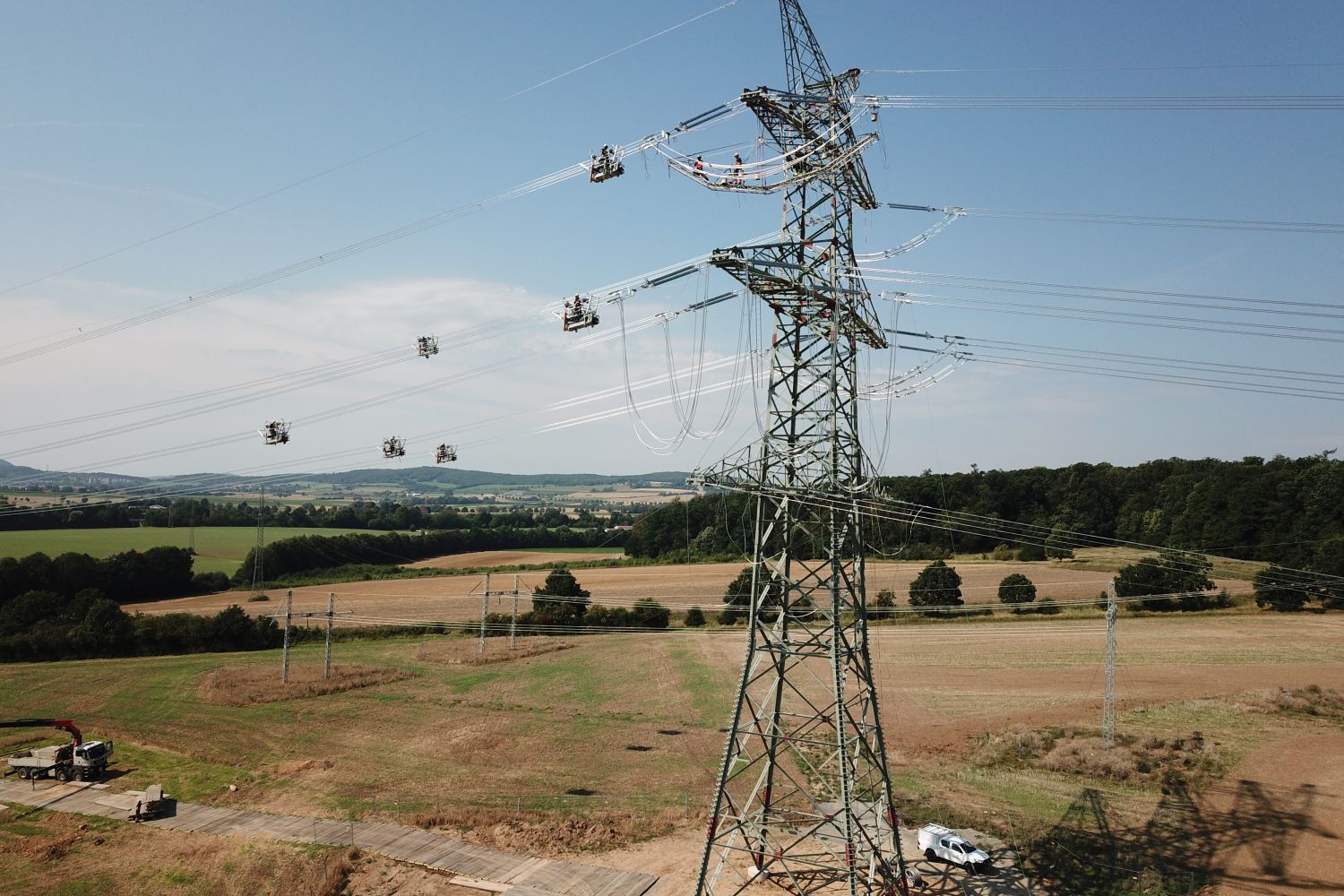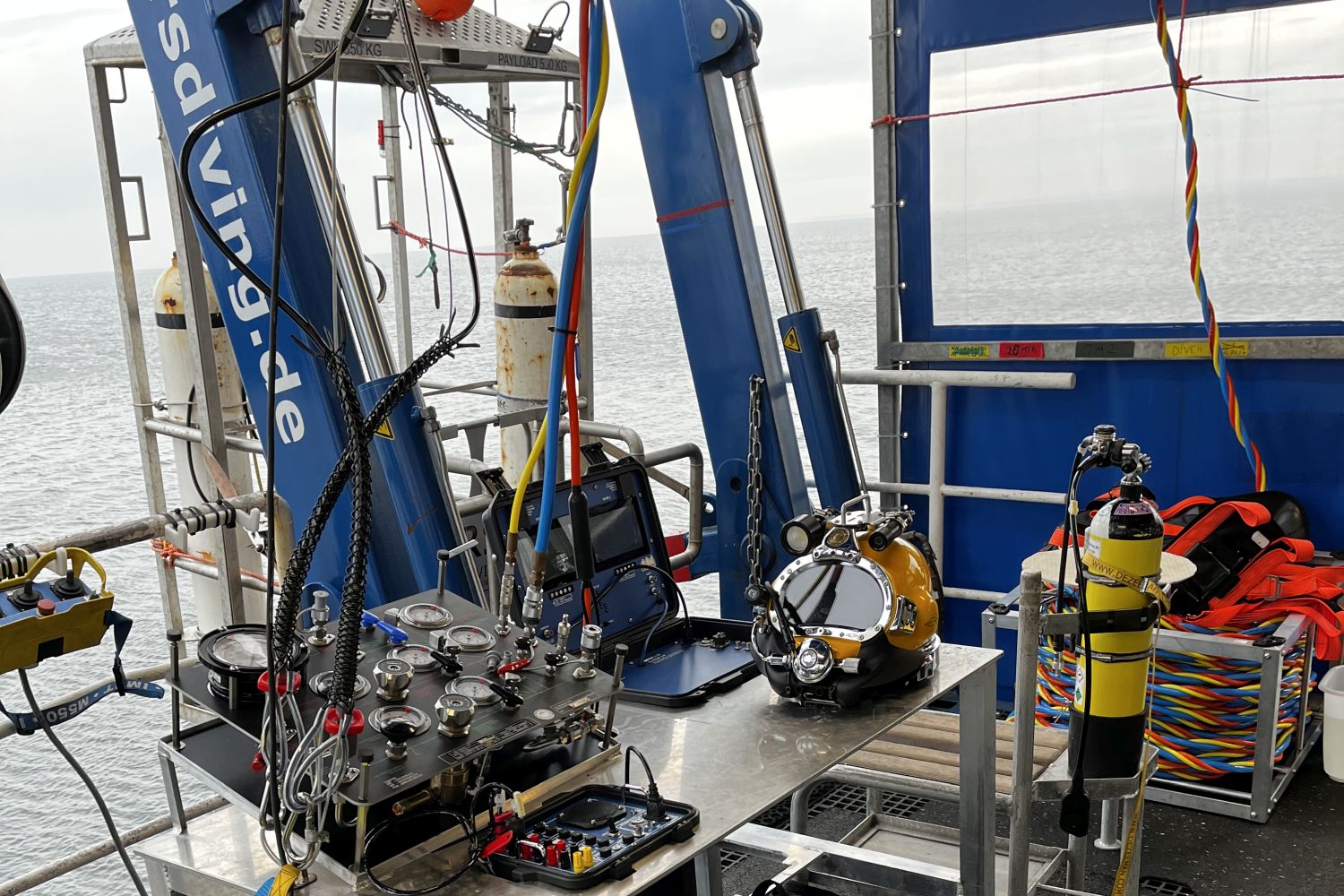When Survival Depends on Personal Protective Equipment
Author: Hannes Rügheimer
Some professions are more extreme than others. They operate in hostile environments or at least involve an increased risk of accidents with serious consequences. Personal protective equipment (PPE) ensures that professional divers, industrial climbers, firefighters, and similar occupational groups are optimally protected while working.
Certain occupational groups rely on specialty technical systems to protect their health and lives, each of which must operate flawlessly, maintaining one hundred percent functionality at all times. This is why legislation places particularly high demands on personal protective equipment (PPE) and its manufacturers.
Take professional divers, for example. From a technical point of view, their activities do not differ significantly from what other specialists do on land – welding, sawing, assembling, or dismantling. But the challenges are considerably greater when salvage, rescue, and construction work has to be carried out at up to 50 meters below sea level. Their workplace is a distinctly hostile environment: Operating under high pressure, in complete darkness, and at extremely low water temperatures. A professional diver’s survival in such conditions depends solely on his equipment. A drysuit and a diving helmet provide protection from water pressure and temperature, as well as a breathing air supply.
Hans Ketelaer, German Managing Director of De Zeeman Pro, a company specializing in professional diving equipment, explains: “The professional equipment has very little in common with the equipment used by amateur divers.” For example, the HTA19 helmet diving system supplied by his company also includes a “diving telephone”, allowing the diver and the dive leader on board the supply boat to communicate. The diver uses a harness to carry a backup air cylinder and lead weights on his back. “Attached is also the so-called hose line, which consists of an air supply line and an additional line for determining the diving depth and displaying it on the diving supply panel on board the supply boat. Additionally, lights and a camera system are mounted on the diving helmet,” Hans Ketelaer elaborates.
With a winch, the diver is lowered to the required diving depth – a maximum of 50 meters – in a basket. Once at the required depth, the diver exits the basket to carry out the task. Incidentally, one of the most important customers of De Zeeman Pro, which is based in Macken in Rhineland-Palatinate, are the German armed forces – their navy divers are often the only qualified specialists when it comes to salvage or underwater repairs, for example. Naturally, the procurement of personal protective equipment is subject to relevant laws and regulations of public procurement law – De Zeeman Pro is not the only supplier commissioned in this context.
Working 40 meters above ground - powerline technicians require fall protection
Let’s switch locations. 50 meters below sea level is not the only extraordinary place to work; working 40 or more meters above ground is another extreme. This applies, for example, to installation, expansion, or repair work on the overhead lines of the electricity transmission grid. These line workers are usually suspended from steel lattice pylons, which are placed 400 to 600 meters apart. Many of these pylons are out in the open with no fixed access route. There are several reasons why these steel lattice masts are not as easily accessible as a staircase: one reason being the costs, certainly, but more importantly to prevent unauthorized access, thereby safeguarding people as well as the systems.
During assembly or repair work, the overhead line workers ascend the lattice towers using climbing bolts or stirrups on the corner posts, or via central access ladders. Depending on the work assignment and local conditions, they might also use assembly platforms, attached between the pylon structures and special conductor ropes. For work on the sections between the poles, there are motorized cable trolleys suspended on the conductor cables. In each case, personal protection equipment (PPE) is used to secure the linesmen – including gear such as fall arrester devices, safety harnesses, safety ropes with snap hooks or rope clamps. To prevent the technicians from falling from extreme heights, similarly to mountain climbers, the general conditions have to be carefully planned out and ensured. Anyone working in the vicinity of 380,000-volt power lines needs to rely on the fact that the power lines they are working on, or that run close to the work site, are switched off. More importantly, they need to know exactly which lines on which side of the pylon this may not apply to.
Manufacturer Preising from Wipperfürth, for example, is a supplier of fall protection systems used to protect overhead line workers. Managing Director Paul-Eric Preising says: “As with all extreme professions, a single careless mistake can cost an employee their life. Personal fall protection equipment plays a key role in protecting yourself.” It is – almost literally – the final safety net to prevent the worst case. But the safety requirements in overhead line construction go even further: The companies involved are required to have special rescue concepts for each installation step. For example, if a technician has health problems or an accident, it must be ensured that they can be safely brought back to the ground at any given time. SPIE Germany & Central Europe, based in Ratingen near Düsseldorf, is one of Preising’s major customers. They employ overhead line workers, who in turn work for SPIE’s clients and train their employees regularly. Thomas Hartmann, Head of the “Health, Safety, Environment, Quality” (HSEQ) department at SPIE, emphasizes: “In addition to the actual activities and general safety guidelines, the proper use of personal protective equipment is a key topic in training courses and practical training.”


How firefighters protect themselves from danger
There are many other workplaces in which employees require special protection – like firefighters entering a burning building to rescue people. In order to keep their risk as low as possible, reliable respiratory protection is essential in addition to protection against heat, flames, sparks, embers, or molten surrounding material with special firefighter protective clothing. Technical regulations define factors such as heat transfer through flames and describe the requirements for closed-circuit breathing protection systems in non-breathable atmospheres. The compressed air supply is provided by an insulating device that feeds the breathing air into a hermetically sealed combination of breathing mask, firefighter helmet, and fire hood. In addition to providing protection against the ambient heat and a supply of breathable air, the equipment must also ensure that the wearer has a clear view and is therefore able to maintain a sense of orientation in a life-threatening environment. For other operational situations, specialized protective clothing and systems against biological or chemical contamination, electricity and electrostatics, noise, and other hazards is available.
Incidentally, all three examples are areas in which DEKRA Testing and Certification carries out the certification and testing of the personal protective equipment, PPE for short, used in each case. A distinction is made between medium risk (category II) and high risk (category III). “In both cases, the PPE must meet particularly high quality and safety requirements,” explains Dirk Wessels, Head of Personal Protective Equipment and Site Manager Essen at DEKRA Testing and Certification GmbH. “After all, the user’s health and, in extreme cases, life depends on the safe and reliable functionality of protective clothing and equipment.”
Certification of personal protective equipment by DEKRA
When it comes to testing and certifying personal protective equipment (PPE), DEKRA is a competent partner for manufacturers, distributors, as well as companies and institutions using this type of equipment. DEKRA Testing and Certification GmbH is an accredited “European Notified Body” and offers testing and certification in accordance with the European PPE Regulation and the German Equipment and Product Safety Act.
The catalogue of systems that can be tested and certified includes self-contained breathing devices, filtering respiratory protective devices, breathing connections, escape equipment (for example so-called self-rescuer units), protective head gear and clothing, personal protective equipment against falls from great heights, and, additionally, the general technical approval of anchorage devices.


